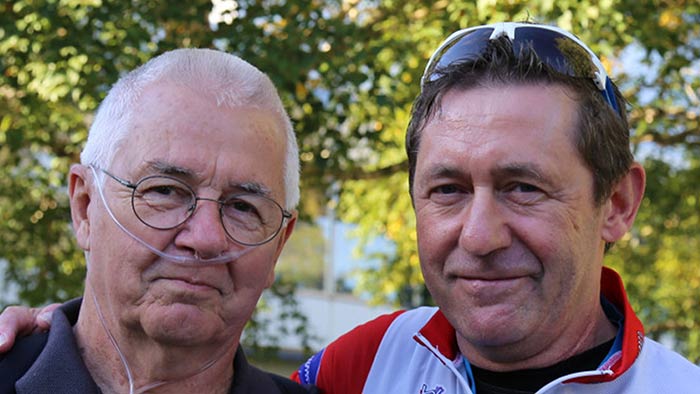When Caregivers Exercise, Loved Ones with COPD Are More Active, Too
Many people with COPD have trouble sticking with an exercise program over the long haul. As a caregiver, your own exercise habits can have a healthy influence on your loved one with COPD. A new study showed that, when people with COPD lived with someone who was physically active, they were more likely to be active themselves.1
Caregivers can be exercise role models
This study by Dutch researchers was published online in January by the journal Chest. The participants were 125 pairs of people who lived together. One member of each pair had COPD. Overall, study participants with COPD were more sedentary than those they lived with. That comes as no surprise. People with COPD often experience shortness of breath during physical activity, which may discourage many from exercising. However, when those with COPD lived with someone who was physically active, they engaged in more moderate- to vigorous-intensity activity themselves. That's important, because keeping moving is great for people with COPD. In a 2017 report from the Global Initiative for Chronic Obstructive Lung Disease, physical activity is recommended for helping manage COPD at every severity level. 2
Having fun spending active time together
In the study, people with COPD were less likely than their caregivers to say that they exercised due to “intrinsic regulation"—in other words, simply because they enjoyed it. The researchers note that it may be harder for people with respiratory problems to enjoy exercise. But it's certainly not impossible. To support your loved one with COPD, help make physical activity feel more like play than work. First, be aware of the types and amounts of activity recommended by the healthcare team. Then invite your loved one for a walk, bike ride, or swim.
Helping a loved one stay active with COPD
Here are some more ways to help your loved one—and yourself—stay motivated to move:
References
1. Chest, 10 January 2017. http://dx.doi.org/10.1016/j.chest.2016.12.021 2. Global Initiative for Chronic Obstructive Lung Disease. http://goldcopd.org/gold-2017-global-strategy-diagnosis-management-prevention-copd Accessed on 10 February 2017. 3. American College of Sports Medicine. http://www.exerciseismedicine.org/assets/page_documents/EIM%20Rx%20series_COPD.pdf Accessed on 10 February 2017.


